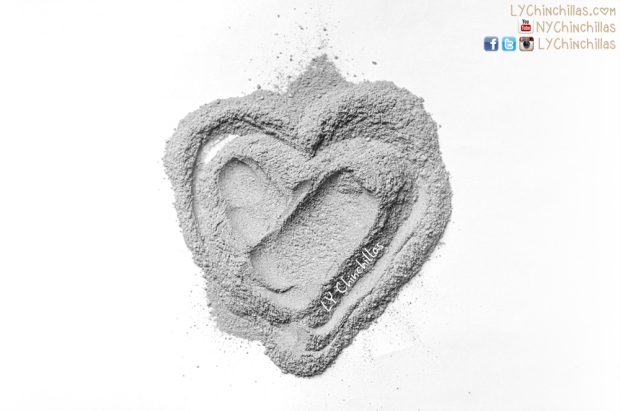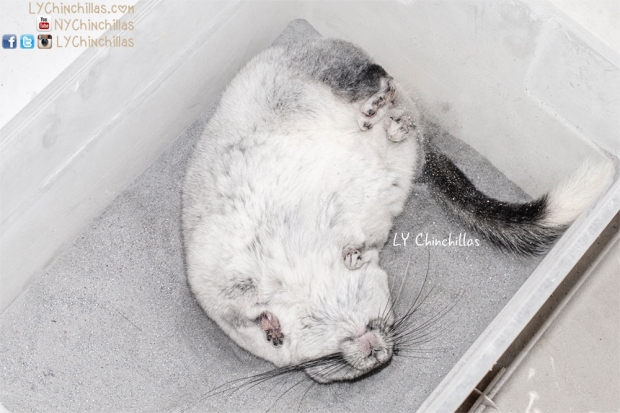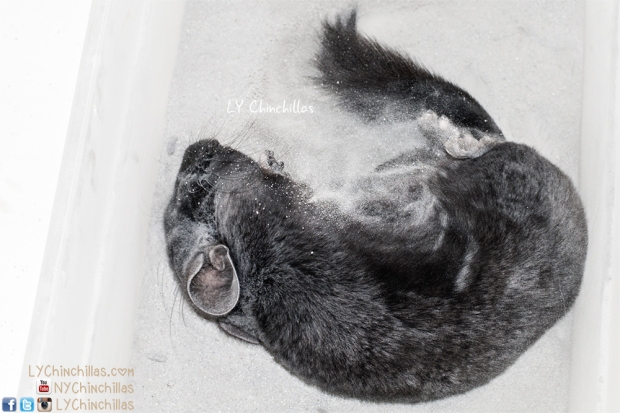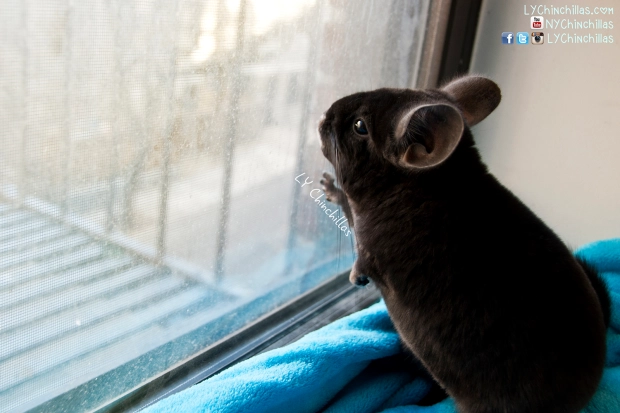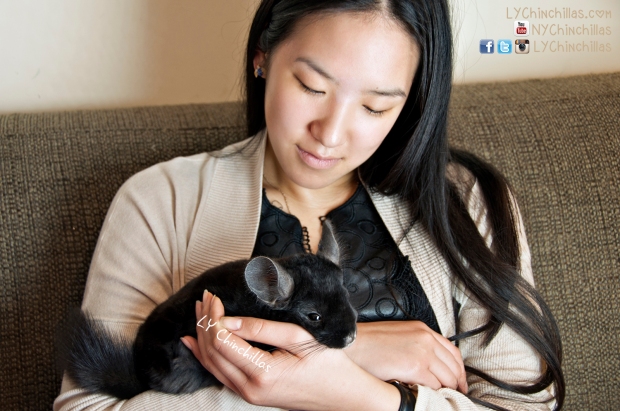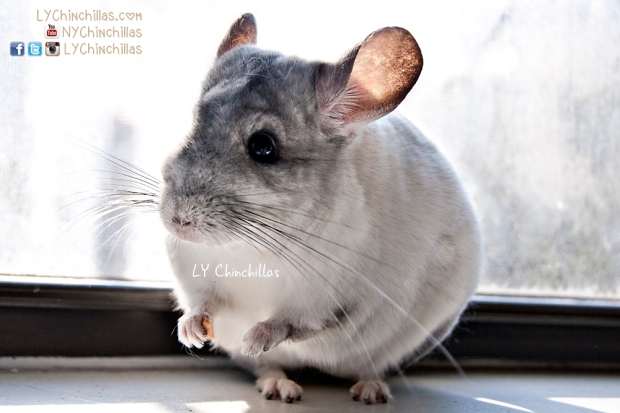Well, it’s official: this autumn has been incredibly busy for the human (that’s me!). However, that doesn’t mean that I’ve been neglecting my babies. Life is all about priorities: the people, experiences, and fluffs that are meaningful in your life will rise to the top of your to-do’s and will always be accounted for. So, let me catch you up on some of the fun changes ongoing in the world of LY Chinchillas!



 New DIY Goodies: I am a huge fan of DIY when it comes to the world of chinchillas: cages, toys, accessories, sourcing and preparing your own chin-safe wood (a list of safe wood can be found here), litter boxes, cookies, and more! Most recently, we’ve replaced our pine litter boxes, swapped out some older ledges for clean pine, and added in a slew of fun new hanging toys! It’s always great to make your own toys: it’s less costly than buying toys outright and allows you to be as creative as you want. I often dream up toy designs depending on each of my chins’ quirky personalities!
New DIY Goodies: I am a huge fan of DIY when it comes to the world of chinchillas: cages, toys, accessories, sourcing and preparing your own chin-safe wood (a list of safe wood can be found here), litter boxes, cookies, and more! Most recently, we’ve replaced our pine litter boxes, swapped out some older ledges for clean pine, and added in a slew of fun new hanging toys! It’s always great to make your own toys: it’s less costly than buying toys outright and allows you to be as creative as you want. I often dream up toy designs depending on each of my chins’ quirky personalities!
Always in Stock: While not such an exciting ongoing development, it’s important to mention that with chins, there come perpetual costs. Although pellets and hay are not that expensive if you buy in bulk, chinchillas are intellectual and emotional creatures that deserve (and need) a good deal of mental and dental stimulation. That’s why I always have a full stock of apple sticks, cholla sticks, pumice stones, rosebuds, rose hips, marigolds, shredder tape, and other delicious chew/treat options. Over the years, I’ve been able to curate a good balance of their favorite chew selections and make sure to award them for cuteness! This is all, of course, in addition to the plentiful hay and pellets included in a healthy chinchilla diet. Oh – it never hurts to remind everyone that I have two 26 oz water bottles per cage, and at least two extras on hand for replacement just in case. You never know, and water’s one of those fundamental necessities!
 New Fleece: When the seasons change, so doth the fleece. While colors and designs bring a fresh new feel to their cages, it’s also important to discard fleece after a certain level of usage. Typically, when non-pill fleece starts to lose its original texture, that’s the sign to swap. Luckily, fleece ordered online is inexpensive and plentiful, meaning there’s tons of delightful – and affordable – designs to choose from!
New Fleece: When the seasons change, so doth the fleece. While colors and designs bring a fresh new feel to their cages, it’s also important to discard fleece after a certain level of usage. Typically, when non-pill fleece starts to lose its original texture, that’s the sign to swap. Luckily, fleece ordered online is inexpensive and plentiful, meaning there’s tons of delightful – and affordable – designs to choose from!


 New Accessories: Not only have we re-stocked on some fun hammocks for Muff and Koko, but we’ve also been fortunate enough to have discovered a new chinchilla vendor – Whisking Woodworks! Creator Robyn is a young furniture designer and chinchilla lover in Seattle, WA, and Whisking Woodworks is all about creating unique chin-safe accessories for fluffy friends. Be sure to visit her website and check out the beautifully crafted octagonal furnishings – perfect for the contemporary, modern, or spunky chinchilla! 😛
New Accessories: Not only have we re-stocked on some fun hammocks for Muff and Koko, but we’ve also been fortunate enough to have discovered a new chinchilla vendor – Whisking Woodworks! Creator Robyn is a young furniture designer and chinchilla lover in Seattle, WA, and Whisking Woodworks is all about creating unique chin-safe accessories for fluffy friends. Be sure to visit her website and check out the beautifully crafted octagonal furnishings – perfect for the contemporary, modern, or spunky chinchilla! 😛
As far as existing shelving and ledges, a super helpful tip for a super busy month: if you’re unable to make it out to refurnish your chin’s kiln-dried pine, simply flip your less-than-perfect ledges upside down and re-adhere! You’ll be set for at least a few weeks while you get ready to hit up the local lumber supplier. Over the years, I’ve found it’s much more convenient to buy large quantities of kiln-dried pine in bulk and properly store goods in a dry, clean environment until you’re ready to create some delectable chinjoyable structures! You never know, inspiration can hit you like a 50 lb. bag of blue cloud dust, so the basics are great to always have on hand.
Holiday Photos: Yes, it’s almost that time of year again, where the elves of the world ready their cameras for prime-time-chinchilla-photoshoot time! While we’ve only managed to grab a few pumpkin and autumn-themed captures, we are keen on remaking horror movies and having some spooky fun (click the link – you won’t be disappointed by Mitty’s acting debut)! But definitely, be on the lookout for some Christmas-themed goodness headed your way, direct from the five flooferoos! 🙂 Have a wonderful month, fluffs and fluff-lovers!
While we’ve only managed to grab a few pumpkin and autumn-themed captures, we are keen on remaking horror movies and having some spooky fun (click the link – you won’t be disappointed by Mitty’s acting debut)! But definitely, be on the lookout for some Christmas-themed goodness headed your way, direct from the five flooferoos! 🙂 Have a wonderful month, fluffs and fluff-lovers!

LY Chinchillas Treat Donation
Donate healthy, delicious treats to LY Chinchillas to help keep our content going!
$5.00
